#Tanks in WWI
Text
Tanks In Germany OTD May 22
May 22 1919 #OTD In Cologne, Germany, John Warwick Brooke takes these photos of a British Army of The Rhine, 12th Bn, Mark V, Hermaphrodite (with one male and one female Sponson) Tank (s/n 9339)

IWM Q 7650

IWM Q 7651

IWM Q 7655
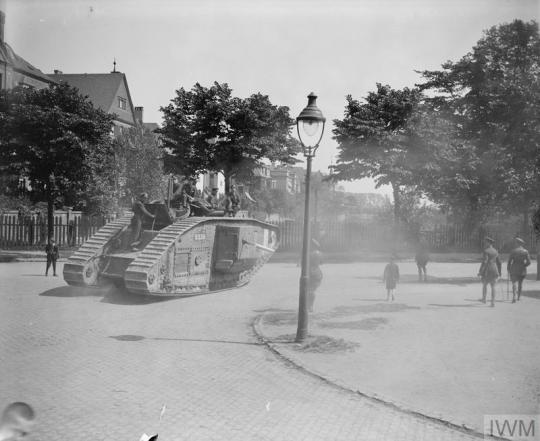
IWM Q 7648
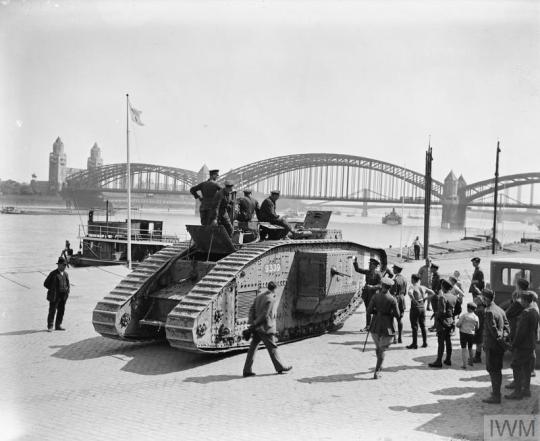
IWM Q 7652
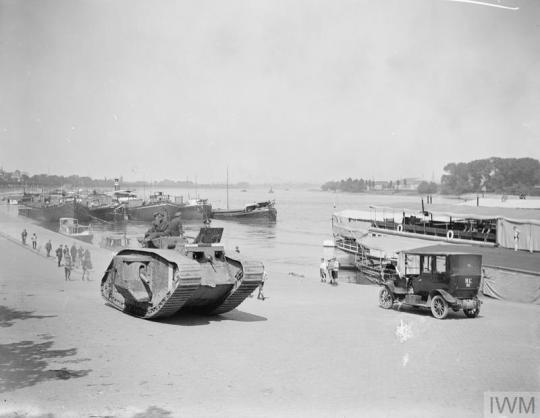
IWM Q 7653
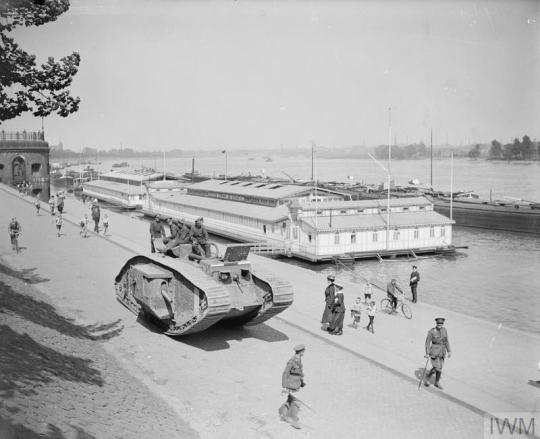
IWM Q 7649

IWM Q 7646
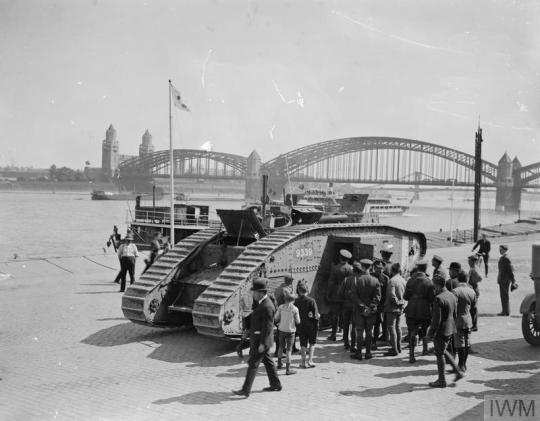
IWM Q 7654 - In the background is the Hohenzollern Bridge
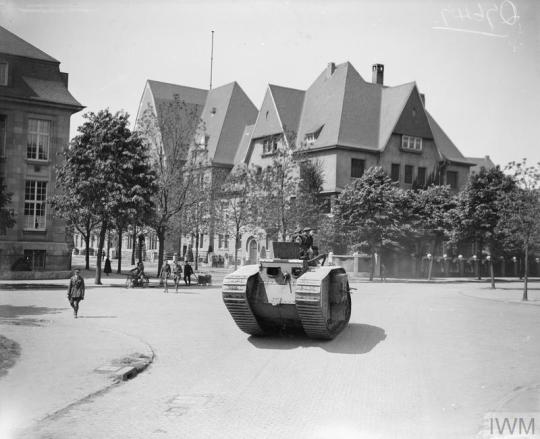
IWM Q 7647
May 22 1919-05-22
45 notes
·
View notes
Text


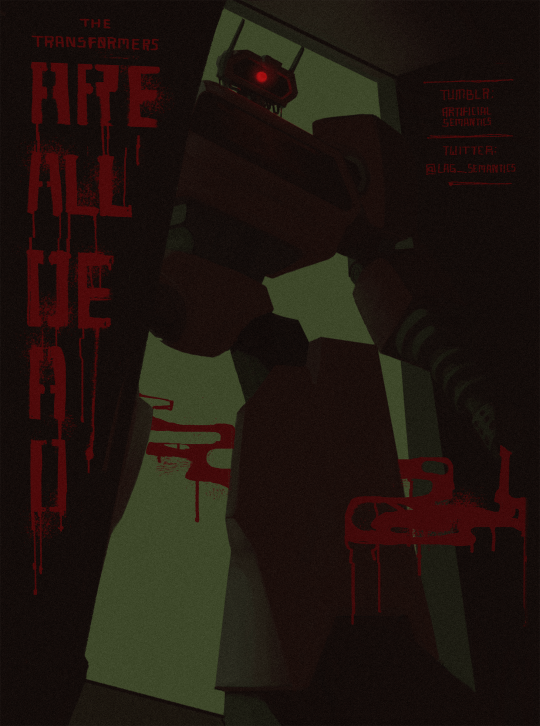
shockwave but its an metaphor for the horrors of war beyond man's comprehension
or alternatively: me at 3AM going into the kitchen in search of shredded cheese (8 found dead, 36 injuried)
based on that one cover by Mark Bright. you know the one.
#oh and also i've been listening a lot to the tank chats by the british tank museum lately#and i sort of wanted to go for a wwi war machine vibe for him#like going for this sort of sense of horror of seeing a tank for the first time#📼 transformers art tag#transformers#shockwave#maccadam#tf g1#original art#artists on tumblr
2K notes
·
View notes
Text
*wakes up at 2am in a cold sweat* A7V toaster
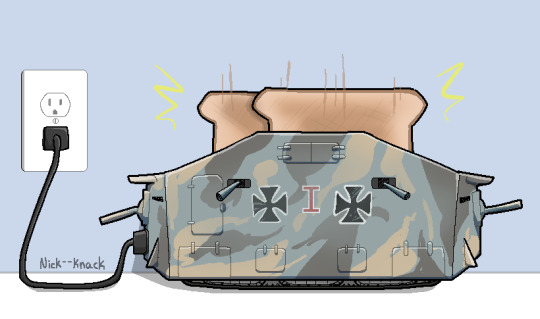
context:
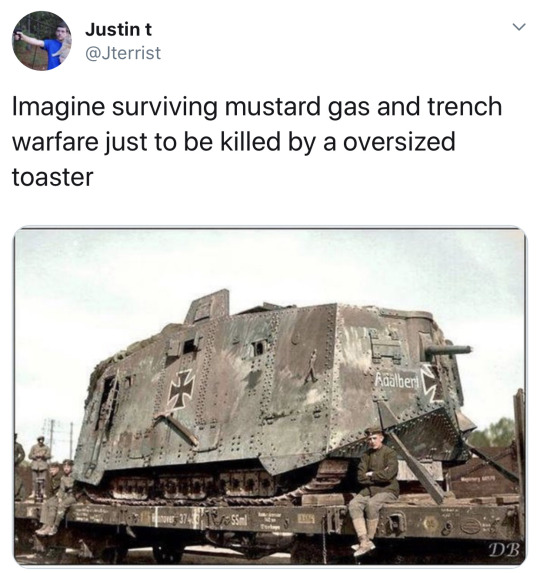
#this tweet has randomly resurfaced in my memory once again and i had to draw something about it#my art#tank#tanks#ww1#wwi
580 notes
·
View notes
Text
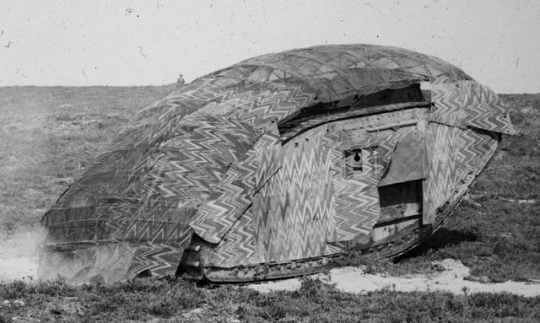
Tudor-Hart’s ‘dazzle’ camouflage pattern tested on a British Mark IV tank, 1917.
82 notes
·
View notes
Text
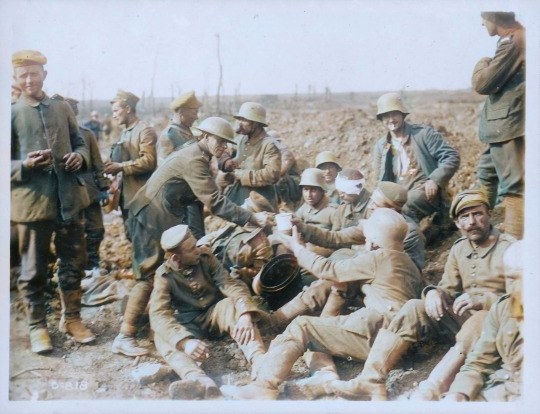
German Prisoners
From 15 to 20 September 1916, the Canadians captured and held the village of Courcelette. During that time, they took 1,040 German prisoners. Canadians here are seen providing the prisoners with cigarettes, food, and drinks. Prisoners would then likely have been taken to cages behind the lines, and finally to prisoner of war camps in France or England.
#somme#historical photos#world war 1#1917#canadian history#history#german#germany#german soldier#german tank#german army#world war 1 stories#ww1#ww1 poetry#ww1 stories#ww1 art#ww1 history#wwi#world war one#The Great War#The First World War
69 notes
·
View notes
Text

Trengine Facetime!
Schatzi is a doddering old man when it comes to modern technology. He's got that thing lying on the nasty ground SOMEONE PLEASE GET HIM A STAND!! AND A CASE TOO!!
The French loco (Reuben) belongs to @ferlost !
#ttte#ttte fanart#thomas the tank engine#thomas and friends#train art#ttte oc: schatzi#ttte oc: Reuben#trench engines#trengines#trench locomotive#ww1 train#ww1#wwi#world war one
66 notes
·
View notes
Text

Kill'em all!!
Watercolor and sepia ink. Available.
Etsy
27 notes
·
View notes
Text
Traintober 2023: Day 25 - Distress Signal
What's Out in Tidmouth Bay:
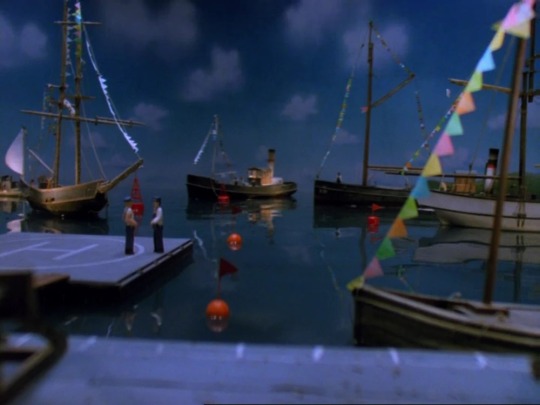
“And every year, on the date of the sinking, the ship rides the seas again, searching for the crew that abandoned her to her watery grave…” Salty finished, grinning at the assembled engines.
“Rubbish!” snorted Douglas. “Thir's na sic thing as ghost ships rising up oot o' th' ocean. Whit a doolally idea. Whitevur neist? A submarine letting oot distress signals, even though thir's na yin thare?” Both he and his twin Donald sniggered. Edward scowled.
“You shouldn’t joke about lost submarines,” he said grimly. “After all, there’s a tale of a submarine that was lost off Tidmouth bay that will make you funnel quiver.”
“Ooo! Tell it! Please!” exclaimed the other engines. Edward shot a dark look at them.
“This is not a pleasant story, and it’s certainly not one to make light of…” With one last sigh, the old engine began his story.
“Back during the First World War, both Britain and Germany began to deploy early submarines to disrupt shipping and try to starve their opponent out of the war. But back then, the submarines were still new technology – they rattled, and sprang leaks, and they were loud most of the time too. But when they glided underwater, not even the keenest of eyes could spot them.
“In 1916, several British submarines began docking at Tidmouth. These submarines were manned by local Sudrians who’d signed up for the navy, and they were very proud of their machines.
‘Best in the Navy!’ they would boast.
‘Never to be beaten!’ we would often reply, caught up in a great patriotic spirit for our country and our boys doing their part to defend it.
“One of the duties of these submarine crews was to tow large underwater mines into choke points in the harbour waterways. These giant, spiked balls of explosives were placed randomly, so that enemy ships would be unable to get too close to the harbour to attack. The submarines were good at this job, and the island’s people always felt safer knowing they were protecting us.
“It all changed one foggy night. A German U-Boat had been spotted off the coast of Liverpool and was sailing north towards us at a tremendous rate. At the time, Tidmouth was a major manufacturer of shells and explosives for the front line, and even one hit to the factory would do irreversible damage. The submarines in Tidmouth bay were sent out to find the German U-Boat, despite the thick fog that made navigation almost impossible – and they found it. Unfortunately, they also found the minefields.
“The radios were filled with crackly cries for help from Sudrian sailors, all lost in the fog and trying to avoid the mines they’d set while also hunting for a German U-Boat. We all waited with bated breath on the shoreline, all listening to the radio and praying for the boys…”
Edward paused, then tears filled his old eyes.
“And then, there was a flash of light – it was so bright, it pierced through the fog and lit up the entire bay – and screams. They came through the radio for only a couple seconds, but they were the longest seconds of my life. They were horrible – wretched, broken, filled with agony and suffering – and then they were gone. One of the Sudrian submarines had found the German U-Boat and fired on it… but they had missed… and hit an underwater mine. Both ships were destroyed, sinking down to their final resting places on the sea floor.”
The engines were horrified. Even Donald and Douglas were silent, eyes wide. Every engine who had lived through the First World War had known someone who had lost their lives – but to actually see it with their own eyes… it was horrific.
“But that wasn’t the end,” Edward continued, startling everyone. “One year later, the remaining submarines were sat in the harbour when their radios crackled with an unknown message. But it wasn’t just the submarines’ radios – no, it was every radio in Tidmouth. Every single one picked up this unknown, crackling message. It was a distress signal! – a shouted one, in two different languages. One was foreign – German; garbled, broken by the static of the radios. The other however… it was the lost sailors from the sunken submarine. They were shouting at each other and at us – and then there was a massive explosion that ripped through the radio-waves. There was a flash of light – and then those screams. They tortured us, far longer than the screams we’d heard on that fateful night. They were in German too now, as if both ships were wailing for their losses. And then… nothing.
“This happened again the next year, and then the year after that – and after that, the people of Tidmouth learnt. Every year, on the date of the accident, every radio in Tidmouth is switched off. It’s a moment of silence, for the men who lost their lives.”
No one knew what to say, and so they all went quietly to sleep.
The next evening, Edward was away on his branchline, and a new driver decided to leave the radio on for the engines in the sheds. This was not uncommon – the engines enjoyed the background noise; it was relaxing after a long days’ work.
It was only Donald and Douglas – Bear had the midnight goods, Gordon had the express, Salty was delivering some trucks to Elsbridge, Duck was collecting a late load of ballast, James and Henry were sleeping at the other end of the line, and Oliver was pulling the last passenger train of the evening.
“Edward's story - ye dinnae hawp it, dae ye?” asked Donald.
“Na! nae at a' - tis a guid story fur a friten, bit thir's na sic thing as ghosts,” snorted Douglas. “Especially nae ghosts sending oot distress signals.”
“Aye, whit nonsense…”
The song on the radio ended – but another didn’t start. Instead, the radio crackled – as if suddenly overwhelmed by a wave of static. Voices could be vaguely heard from the radio, quiet – but growing louder. They were in English… and in German. They were screaming, pleading, arguing, begging for help. It was a distress signal. The voices grew louder, more garbled – and then, there was a sonic BOOM! that erupted from the radio, almost knocking the Caledonian twins off their rails.
It was followed by a horrific wailing and screaming. It ripped through Donald and Douglas, their boilers going cold at the sound. It was the sound of dying men. It stretched on for what felt like an eternity, eventually tapering off into garbled groaning, and then nothing.
An unseen figure in a top hat clicked off the radio, and vanished out the back door, unheard by the twins. They were barely holding in their tears, eyes wide and wheels quivering.
Oliver puffed in, looking very confused.
“Are you two alright?” he asked. “You look like you’ve seen a ghost—”
“Dinnae... say that…” Donald croaked.
Oliver stayed respectfully silent.
Back to Master Post
#fanfiction writer#railway series#weirdowithaquill#thomas the tank engine#traintober 2023#traintober#ttte edward#ttte douglas#ttte donald#wwi fiction#naval#submarine#tw ghosts#railways#prompt: distress signal
25 notes
·
View notes
Text
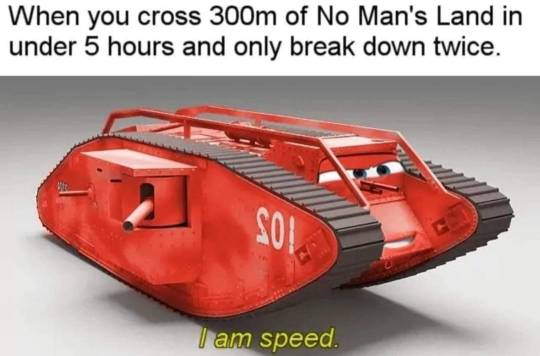
Mark IV
LOL
23 notes
·
View notes
Text
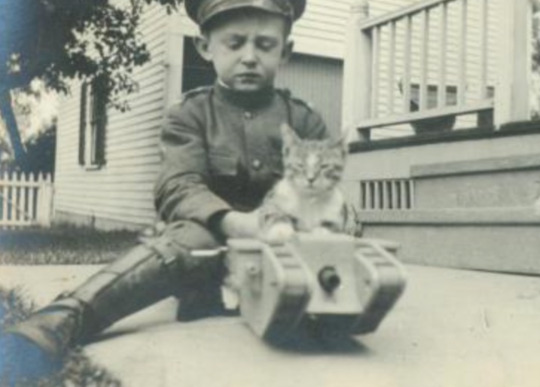
Armored kitten unit. (The date on the website is "ca. 1913", but I'm aware that this is too early as tanks weren't invented yet.) Source.
130 notes
·
View notes
Text
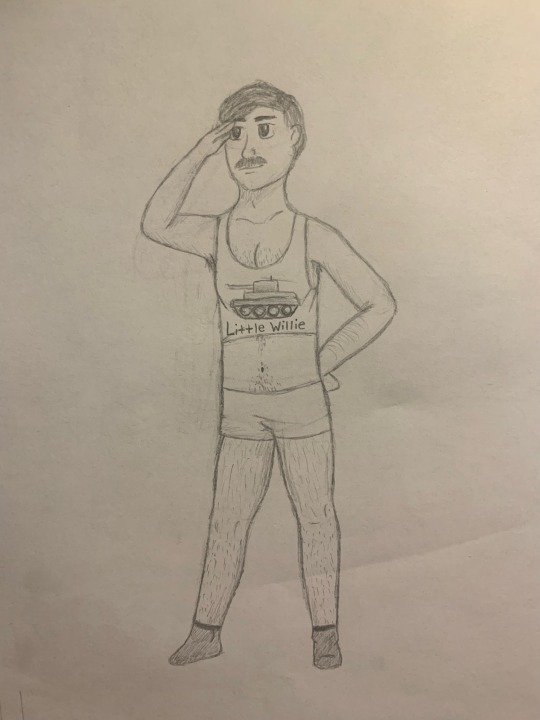

Happy That Old Man Is Slutty Thursday (or Fuck, That Old Man Is Slutty Friday)
Ben tweeted about tank tops earlier today but I (and various other beautiful individuals) thought he was talking about actual tanks and got quiet confused. So naturally I drew Cap in a tank tank top (and a mesh shirt because tits)
#hope you guys likes the ‘little willie’ joke because it took me far too long to come up with#although the design is from a wwii tank and little willie was the first tank ever made in wwi and looked very different (ugly)#so I’m sure cap would be disappointed in that discrepancy#bbc ghosts#the captain#bbc ghosts fanart#my art
28 notes
·
View notes
Text
Steam Powered Tank ‘America’

The Mississippi newspaper, the Jones County News, #OTD May 16 1918 publishes a photo of the American Steam-powered Tank, dubbed "America." The caption reads, "The first American-built tank, called the 'American,' is the biggest ever constructed, and is greatly superior in power to any other. It weighs 45 tons, and is propelled by steam."
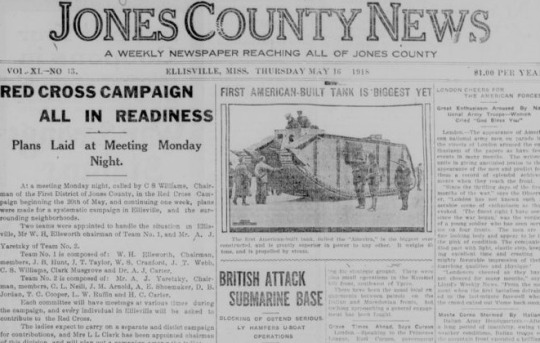
Taken Apr 17 1918:
National Archives Identifier:55229710
Local Identifier:111-sc-35243

"'America' The first large American Built Tank completed. Rearview of the 'America' the first tank to be completed. The tank is said to be much larger in every way than the tank Britannia which has visited almost all the large cities of the country. In this photograph, the size of the tank can be seen at once. The 'America' made its first appearance in Boston in a parade. Apr 17 1918"
Tank Details: "The flamethrower, located in the front cabin, had a range of 90 feet (27 m); additionally there were four .30 cal. (7.62 mm) machine guns; two in a sponson at each side. The length of the vehicle was 34 feet 9 inches (10.6 m), the width 12 feet 6 inches (3.8 m) and the height 10 feet 4.5 inches (3.16 m). The tracks were 24 inches (61 cm) wide. Each track frame carried mud clearing spikes, sometimes mistaken for battering rams. The tank had a weight of about 50 short tons (45 t)."

21 notes
·
View notes
Text
Harr harr

#history hyperfixation#history#history memes#history buff#wwi#wwii#wwi meme#wwii meme#film history#world war films#idk man#just made my dad watch 1917 with me#i am NOT talking about the fuckin tank movies#there is no room for pro-militairism on this blog
10 notes
·
View notes
Text
In working on my ATLA Hundred Year War Trilogy:
Fair warning, this post goes a bit into military theory and is my showing off my military history background, so if this annoys people feel free to skip.
I don't think the writers of ATLA understand that weapons systems don't exist by default, they arise for specific reasons, to meet specific functions. This is especially clear with the existence of tanks. In real life tanks were the result of trench warfare and the power of artillery and machine guns to sap the momentum of an offensive before it had the chance to get started. Tracks and armor and a cannon were combined to reduce barbed wire and machine gun nests and to concentrate the fire of infantry so infantry and artillery could work with the armor to break any defensive system.
That was the theory, engineering took a generation to start actually catching up with it and in reality the best anti-tank weapon in WWII was a fighter-bomber. Tanks were part of a balanced system, not the primary driving force. The Nazis very much did not fully understand this, which was why they wasted time building over-engineered monsters that were meant to do all the tasks of an army instead of focusing on deeper organizational issues, which the USSR and USA did successfully and the UK semi-successfully.
The problem with ATLA is you have a weapon reliant on a 20th Century battlefield of indirect fire and projectile weapons of the precise kind that do not, in fact, exist in ATLA. And then you have this weapon co-existing with medieval Asian weaponry like halberds, clubs, axes, spears, and the like. This is having Samurai side by side with a Patton tank.
So the question that the writers theoretically could have answered and have yet to do is why a society without gunpowder or any of the actual IRL reasons that went into tanks would suddenly make them and let them be used when there's literally nothing else to support it.
There is actually a pretty simple answer that works here, that after a hundred years of warfare the industrialism demographic revolution is running dry and the Fire Nation lacks the bodies its earlier generals used to muddle through whenever it really had to do so. So tanks developed as a means of using other advantages, hence the 20th Century naval ships co-existing with otherwise medieval aspects, to negate that they just don't have the power to fight battles like they used to.
It's not a deliberate technological advance, it's a stopgap because Iroh and his precursors squandered all those lives and there is no capacity for 'they didn't like that army, here's six more bigger than it was'.
#avatar: the last airbender#atla meta#hundred years war#seriously why do they have tanks at all#weapons do not exist in a vacuum#if there are no wwi style machine guns and rifles and artillery there is no need for a damn tank
25 notes
·
View notes
Text

he French Char Saint-Chamond showing the overhanging front hull and the later M.1897 75 mm field gun. 1917/18.
75 notes
·
View notes
Text

German Prisoners as Stretcher-Bearers
Prisoners were often pressed into carrying the wounded off the battlefield, as shown by this photograph taken during the 1916 Battle of the Somme.
#world war one#historical photos#the first world war#the great war#world war 1#history#wwi#1917#canadian history#german soldier#germany#french#german tank#german army#ww1#world war 1 stories
76 notes
·
View notes